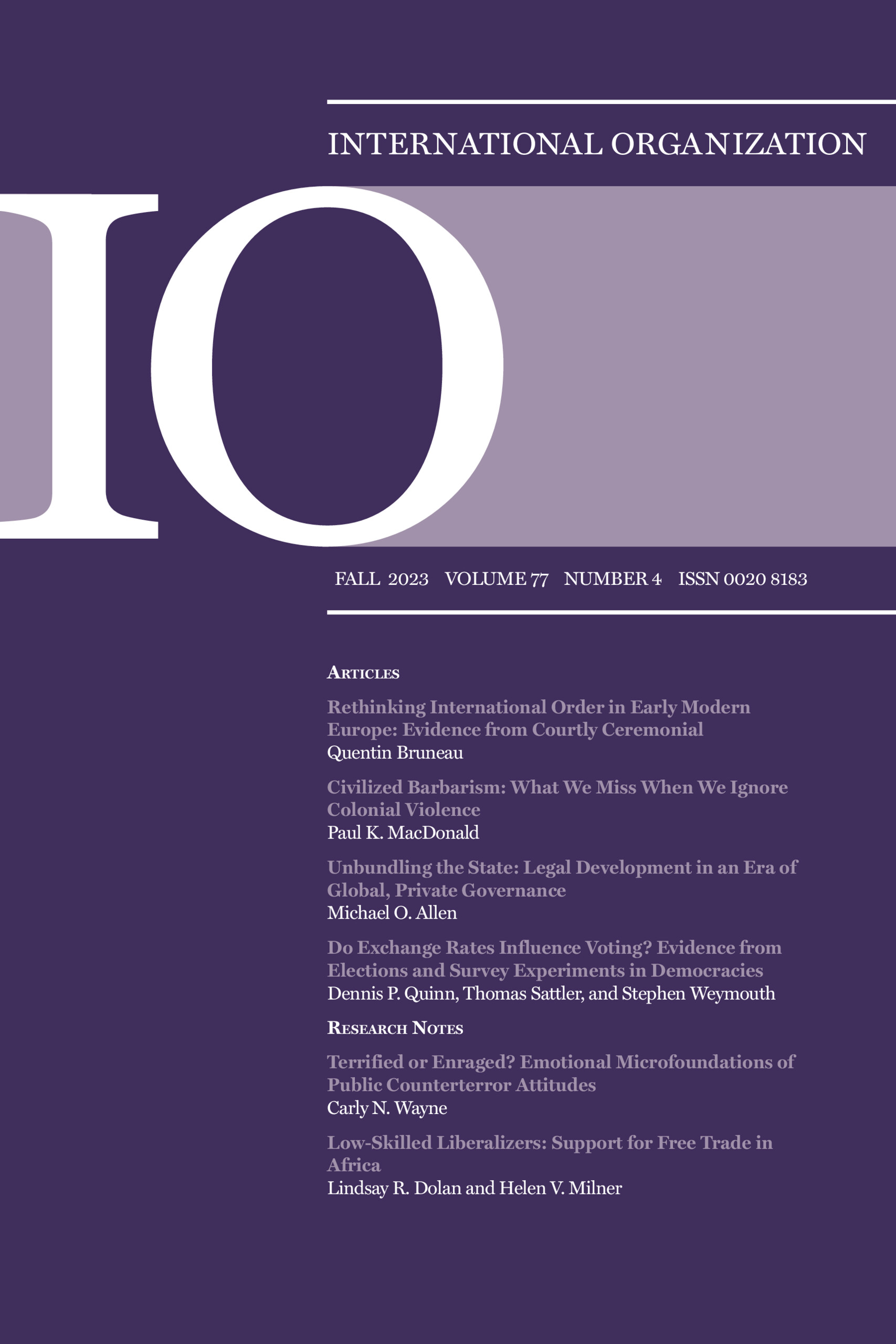Conflicts that Leave Something to Chance
IF 4.5
1区 社会学
Q1 INTERNATIONAL RELATIONS
引用次数: 0
Abstract
The development of nuclear weapons added a new dimension to conventional conflict: the possibility that it could inadvertently escalate into a nuclear exchange. How does this relationship between conventional war and nuclear escalation shape deterrence? I present a formal model of deterrence and arming. The novelty here is that investing in conventional capabilities has a direct effect on the balance of power but also an indirect effect on conflict duration and the likelihood of an accidental nuclear exchange. I find that accounting for the risk of nuclear escalation may require greater conventional force postures for deterrence, thus lowering welfare in the absence of nuclear war. I also find the nuclear era will be more peaceful, but when conflicts occur, they may be more aggressive and decisive. These results (and others) offer insight into the difficulty of substituting nuclear weapons for conventional arms, and into the Soviet response to the 1956 Hungarian Revolution.让事情顺其自然的冲突
核武器的发展给常规冲突增加了一个新的维度:它有可能在不经意间升级为核交火。常规战争和核升级之间的这种关系如何形成威慑?我提出了一个威慑和武装的正式模型。这里的新奇之处在于,对常规能力的投资对力量平衡有直接影响,但对冲突持续时间和意外核交火的可能性也有间接影响。我发现,考虑到核升级的风险,可能需要更大的常规军事威慑姿态,从而在没有核战争的情况下降低福利。我还发现,核时代将更加和平,但当冲突发生时,他们可能会更具侵略性和决定性。这些结果(以及其他结果)让我们深入了解了用核武器取代常规武器的难度,以及苏联对1956年匈牙利革命的反应。
本文章由计算机程序翻译,如有差异,请以英文原文为准。
求助全文
约1分钟内获得全文
求助全文
来源期刊

International Organization
Multiple-
CiteScore
14.50
自引率
1.30%
发文量
25
期刊介绍:
International Organization (IO) is a prominent peer-reviewed journal that comprehensively covers the field of international affairs. Its subject areas encompass foreign policies, international relations, political economy, security policies, environmental disputes, regional integration, alliance patterns, conflict resolution, economic development, and international capital movements. Continuously ranked among the top journals in the field, IO does not publish book reviews but instead features high-quality review essays that survey new developments, synthesize important ideas, and address key issues for future scholarship.
 求助内容:
求助内容: 应助结果提醒方式:
应助结果提醒方式:


